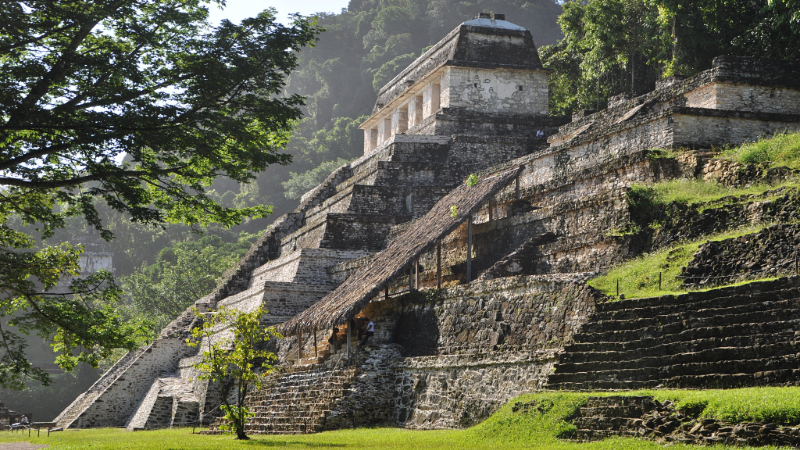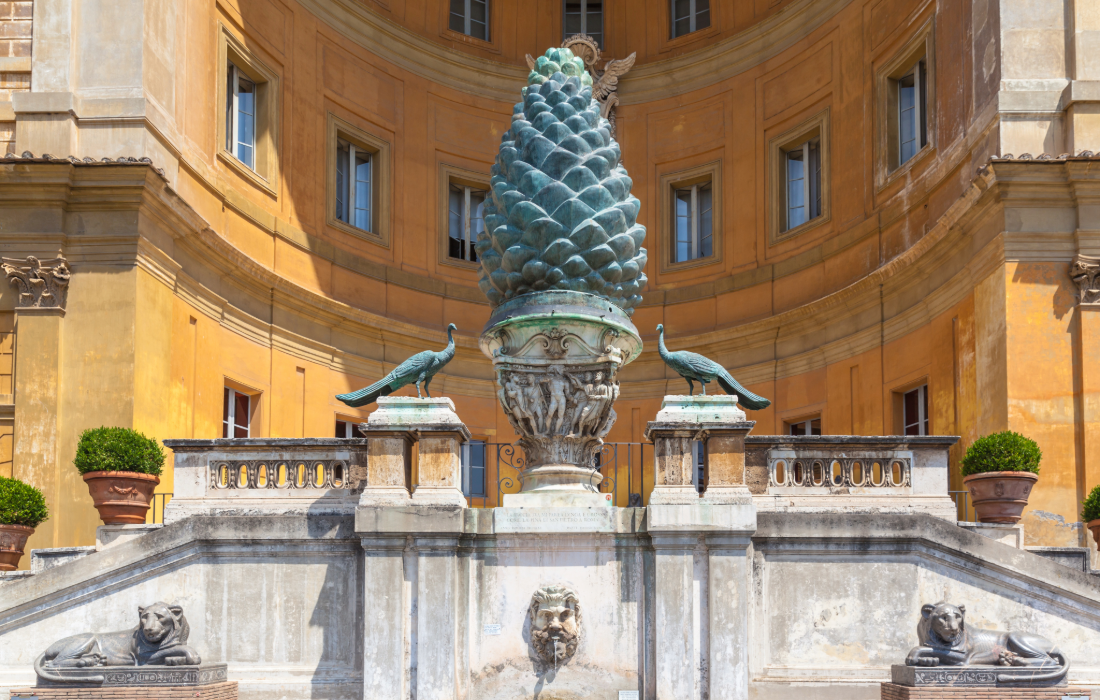Table of Contents: Palenques Architecture
Palenques Architecture easily makes it one of the most advanced Maya city-states. Its renowned for its innovative multi story designs, complex water management systems, and elaborate artistic details. Unlike other Maya cities, Palenque’s structures feature intricate stucco decorations, corbel vaults, and a unique use of aqueducts. The Palace Complex, with its multi-story buildings, and the Temple of the Inscriptions, housing King Pakal’s tomb, highlight the city’s engineering brilliance. Palenque’s architects also mastered hydraulic engineering, constructing the earliest known pressurized water system in Mesoamerica. These advancements not only showcased their technical skill but also reflected their religious beliefs and social hierarchy.

Quick Facts
- Corbel vault construction allowed for larger interior spaces without modern arch technology.
- Palenque’s Temple of the Inscriptions houses the only known Maya pyramid tomb.
- The city had the earliest known pressurized water system in the Americas.
- The Palace’s tower is unique in Maya architecture and may have had astronomical functions.
- Buildings were covered in stucco and brightly painted, creating a vivid urban landscape.
City Layout & Urban Planning

How was Palenque’s city designed?
- Built on natural terraces, integrating with the landscape.
- Organized around major temples, plazas, and the palace complex.
- Extensive use of water canals and reservoirs for urban management.
What made Palenque’s urban design unique?
- Multi-tiered structures and connected buildings created an interconnected urban flow.
- Strategic placement of temples for astronomical alignments. Unlike other Maya cities, it focused more on artistic details than sheer monumentality.
Engineering & Construction Techniques

What building methods did Palenque’s architects use?
- Limestone masonry with mortar for strength.
- Stucco reliefs for artistic and decorative elements.
- Multi-story construction, rare for Maya cities.
What is the corbel vault, and why was it important to Palenque architecture?
- A method of arching roofs without keystones.
- Weaker than Roman arches but well adapted to Maya techniques.
- Allowed for larger interior spaces.
Water Management & Hydraulic Innovation
How did the Maya control water in Palenque?
- Built underground aqueducts to channel water through the city.
- Created reservoirs to store water for dry seasons.
- Used drainage systems to prevent flooding during heavy rains.
What is Palenque’s pressurized water system?
- Likely used for ritual or practical purposes like fountains.
- First known pressurized water system in Mesoamerica.
- Used narrowed channels to create water pressure.
Artistic and Decorative Features

How were Palenque’s buildings decorated?
- Extensive use of stucco reliefs showing rulers, gods, and mythology.
- Intricate hieroglyphic inscriptions on panels and stair ways.
- Brightly painted facades, often in red, blue, and yellow.
What symbols and themes were most common?
- Cosmological themes, such as the three tiered universe (sky, earth, underworld).
- Jaguar and serpent imagery symbolizing power.
- Ancestral rulers and deities carved into temple panels.
Influence & Legacy

How did Palenque’s architecture influence later Mesoamerican cities?
- Advanced stucco techniques influenced later Maya sites.
- Hydraulic engineering inspired future water management systems.
- Detailed hieroglyphic panels set a benchmark for Maya writing.
Why is Palenque considered unique among Maya cities?
- The presence of multi-story structures and a tower, unlike most Maya cities.
- Smaller but more artistically advanced than larger sites like Tikal.
- Exceptional record-keeping through inscriptions.



